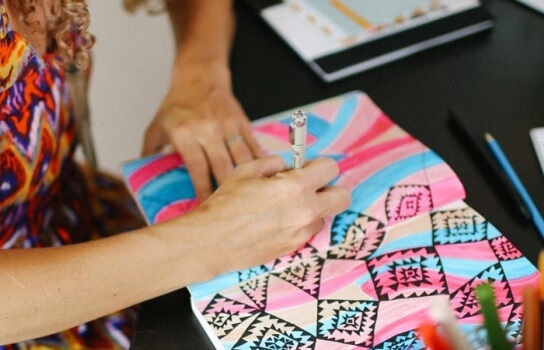-By Dwijendra Kumar
New Delhi (NVI): The textile industry plays a pivotal role in the country’s economy. In addition to contributing around 2% to the Gross Domestic Product of India and 7% to total industrial output, its share hovers around 12% in the total foreign exchange earnings of the country.
The vastness and importance of this industry can be gauged from the fact that today India is the world’s second-largest manufacturer of yarns and fabrics and contributes 5 percent to the world textile and garment trade. According to estimates, the total textile and apparel market in India is worth 150 bn US dollars and this figure may double by 2025-26. Again, this industry is the largest employer next only to agriculture, which is the mainstay of the economy.
No wonder then, the Indian textile industry has a very potential domestic and export market to deal with. But this industry needs to create a variety of weaves and designs to maintain and increase its share in the market.
And so, manufacturers worldwide have begun using innovative and designer textiles or designer fabrics. Since India is an important player in the production of textile made-ups such as textile floor coverings, wallpaper and textile wall coverings, curtains, furniture fabrics, bed, bathroom and kitchen textiles also, the textiles used in even home-furnishing items such as bed-sheets, sofa-covers, curtains, etc have become designer in nature.
In addition, surface designing of the fabrics has become a very important aspect of today’s fashion. All these developments have led to a spurt in the demand for textile designers whose employment so far had been restricted to the textile manufacturing units only. One may very well presume that in immediate future each designing and garment manufacturing unit would have a textile consultant to develop fabrics for them.
Textile designing includes among others the activities related to dyeing and printing of the fabric and also surface designing (which includes embroideries) it.
Indian textile designers are in good demand not only in the domestic textile and garment unit but also in other countries such as Bangladesh, Middle East, Sri Lanka, Malaysia, Singapore, Australia, Indonesia, Brunei, New Zealand, Kenya, Senegal, Oman, etc.
Job responsibilities: The job profile of textile designers include activities such as conceptualizing new innovative designs; experimenting with color, fabric, and structure leading to the creation of sets of design samples; attending trade exhibitions; coordinating with clients to plan and develop designs, and keeping themselves abreast with domestic and international trends.
Training courses: As far as training courses in the field are concerned, there are a number of training institutes in the field. But the pack is led by the National Institute of Design, Ministry of Industry, and National Institute of Fashion Technology, Ministry of Textile, Government of India. These institutes together with a number of private institutions provide a number of graduate and post-graduate courses in Textile Designing.
Job Opportunities: Once professionally qualified, these designers get employed with textile design studios, textile and garment manufacturing units, buying houses and exporters in the fields of made-ups, apparels, furnishings, upholsteries, etc besides the textile mills, as designers, merchandisers, quality controllers, managers, etc.
Skills required/ Success mantra: The key to success in the field include technical skills, creative skills, research and data handling, quick decision-making ability, and the critical evaluation and interpretation of materials.








